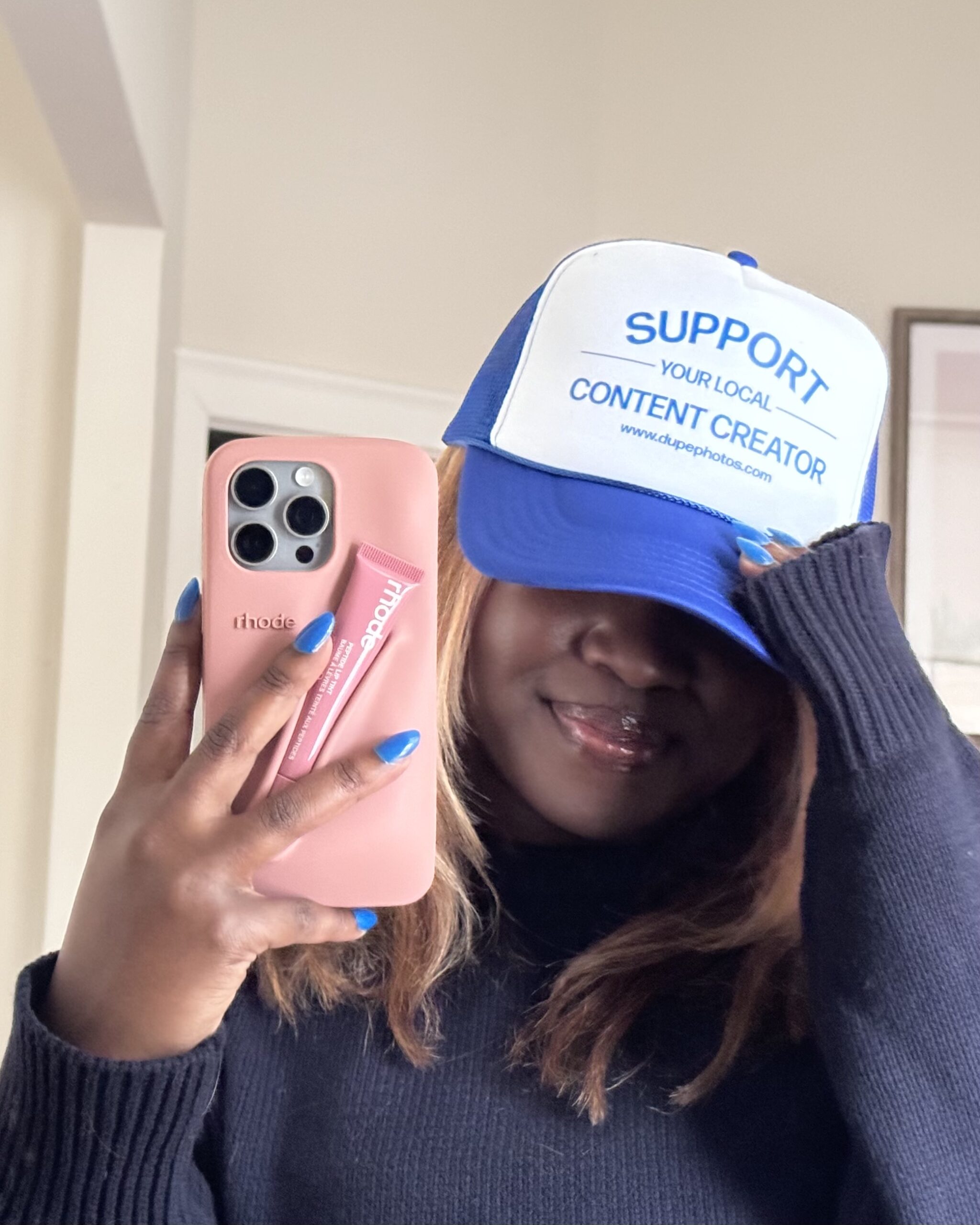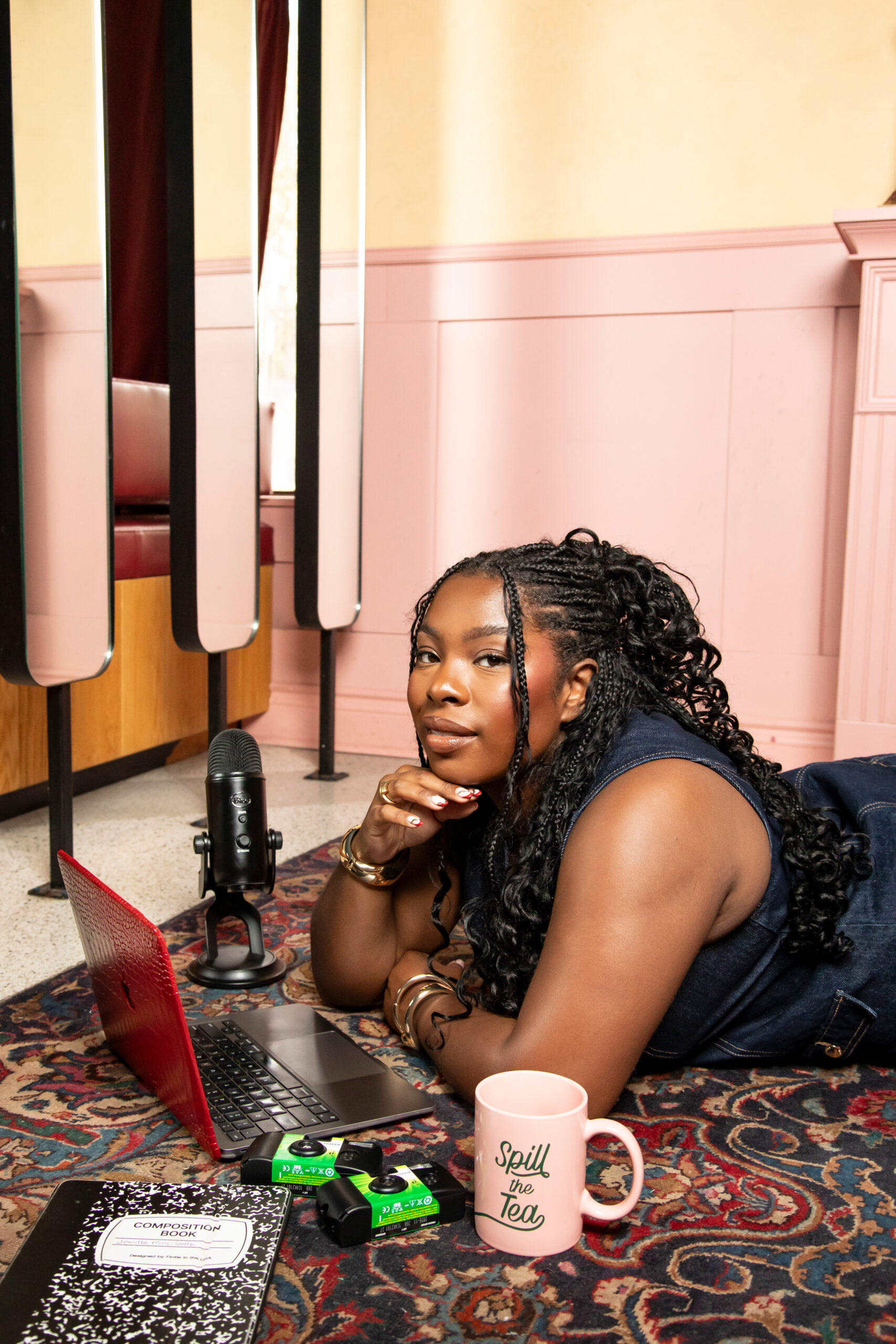HEY FRIEND!
I'm jemilla!
In the past 4 years, I’ve cut my teeth strategizing & writing award-worthy, revenue-increasing, results-snatching copy. And what really lights my fire is writing for woman-owned and BIPOC-led brands. I’m talkin’ the first day after a braiding appointment type of excited! Energizing them to go big with their bold ideas so that when launch time happens, the world thinks “OMG FINALLY, I’ve been waiting for something like this.” And giving them the tools to diversify the market.
about me
services
How to Write Copy With Personality
April 21, 2025
We’ve all run into the same problem — we write some copy to promote our sell our product, but it’s giving boring. There’s no life, it falls flat, and it doesn’t sound like you. A lot of small business owners who DIY their copywriting can attest to this experience — and the one question going through your mind is “How do I write copy with personality?”
Because not only does it not sound good to you, but it doesn’t sound good to your target audience, either. And when that happens, you risk low engagement and even lower conversions.
So I’m going to give you some tips on how to write copy with personality. Let’s get into it ⬇️
Why Personality Matters
Back in the golden age of advertising, executives and creatives knew that traditional advertising needed a shift to appeal to the masses that were starting to wisen up and along with their widening wallet. In any book about copywriting or advertising, you’ll see how much thought and creativity they put into every print ad and commercial. Because they knew that ads with personality built stronger connections and set the brand apart.
Connection Building
Yes, most of us hate when ads interrupt our day — but when we see a really awesome ad that tugs at our heart strings, makes us laugh, or sparks a conversaiton, we appreciate it. Not only that, but we remember it.
I, for example, will always remember the hilarious IKEA ad about a woman who leaves the store in a Bonnie and Clyde-style getaway because she equates the low prices on her bill to getting all her items at a steal.
And who is the chosen brand for affordable furniture to this day? IKEA. Sure, there are others, but IKEA is always the first we think about.
I can trust that I can get affordably priced furniture and decor with reasonable quality there, and it’s because their advertising supports their brand promise.
They found the funny, and that led to lifelong brand recognition and trust — just one example of how emotional engagement and advertising can resonate deep with an audience.
Differentiation
Another reason to write copy with more personality is to help you stand out. In 2023, there were an estimated 358 million small and medium-sized businesses worldwide — and you can bet your booty that a good chunk of those businesses are your competitors, whether direct, indirect, or potential.
Copy with personality helps you stand out in crowded markets, distinguish yourself from your competition, makes you more memorable, and makes it easier for people to pick you out of a police lineup (metaphorically, of course).
A good example is how Heineken stands out with their advertising that’s just as much about being present in the moment with the people around you as it is their delicious beer.
While other beer brands focus on the quality of the product, Heineken finds ways to make the product desirable by showing how distractions like our phone get in the way of enjoying a great pint of beer with friends. Now that’s iconic!
Before You Write, Find Your Voice
Self-Assessment
How do you actually talk day-to-day in your business — with clients, with your team, and to yourself (don’t front, we all do it).
You can have an audio transcriber record you as you talk, and pick out your personal communication style. The words and phrases you use, how conversational vs. industry-jargon-y you speak, your tone of voice, all that jazz.
Figuring out your brand values and mission are also helpful, because they support your messaging as much as they do your business actions.
For instance, my brand mission is: “Destabilize performative marketing and products that pander for the sake of a buck by helping women-owned & BIPOC small businesses stand out, connect with their people, and sell their stuff. With brand voice & messaging development, compelling & conversational & culturally-relevant copywriting, and attractive content marketing ”.
From that, we can say that whenever I sell a product or post on Instagram, I should talk about how it supports my mission and my target audience.
You also want to think about what your audience will expect from you. I think now more than ever, in the corner of the online space I’m part of with predominantly women-owned businesses, we all expect cohesive brand experiences, branding with personality, and to have a good time while getting the best value for our investment.
So, think about what your target audience, and your industry, will expect from your communications.
And consider the cultural context of your target audience and industry, and how that’ll influence how you speak.
Brand Voice Exploration
Another big factor in writing copy with personality is your brand voice and tone of voice. Are you sophisticated like a luxury brand (ex: Tag Heur), young and bubbly like a probiotic soda brand (ex: Poppi), or do you got some fire in your voice (ex: Nike).
You’ll want to define your voice characteristics, how your tone changes depending on where you’re talking (Instagram vs. email newsletter vs. website copy vs. a funding pitch), your language patterns, and guidelines for how you talk in different places.
Then, and only then, can you start to write copy with personality.
Tips on How to Write Copy With Personality
Be Conversational
I find that the more you keep it real and talk like a normal person, the easier it is to write copy with personality. It may not seem like much, but even something as simple as using contractions and casual language, asking one-sided questions that get your reader to answer in their head, and using everyday colloquialisms and idioms can make your copy breathe better and not be so stiff and boring.
It adds a natural flow that feels like when they’re reading your copy, they’re actually talking to you face to face. So:
- Whenever you write something, say it out loud and then try to say it again as if you were explaining it your bestie who knows nothing about what you’re talking about
- Use contractions wherever you can; ex; can’t vs. cannot, I’m vs. I am
- Make a running list of common phrases that we all know and say; ex: pot calling the kettle black, crashing out, MY SHAYLAAAAA, etc.
- Whenever you want to get someone to take action, make the last line a question and the button copy their hopeful answer
Feast your eyes on these examples ⬇️


Tell A Story
Storytelling is one of the best psychological techniques in the book (pardon the pun), and is a great way of adding more personality into your copy. That could be with:
- Personal anecdotes: this adds more personality to your copy and your brand, so you go from just selling something to talking about the person behind the thing. People trust other people more than a business, so this’ll work in your favour
- Customer stories: people love to hear a testimony, and sharing other customer’s journey’s to achieving success is a great way to engage potential customers and inspire action
- Metaphors and analogies: These work for a reason — they make things complex things easier to understand and break up the monotony of hard-sell copy. So whenever you want to explain something, use a metaphor or analogy
- Narrative structures: again, people love stories — so when you want to talk about the transformative power of your product, or how it can take your reader from a place of struggle to one of success, write an actual story. You can even give the protagonist a name and follow the template of a common story structure: exposition, rising action, climax, falling action, and resolution
Feast your eyes on these examples ⬇️



Humour and Wit
There’s a time and place for this, and you can usually figure out when it’s appropriate, but finding the funny is a great way to write copy with personality.
You’ll want to think about the culture your target audience is in — whether that’s being BIPOC, being a female entrepreneur, or being a fitness girlie who drinks probiotic sodas — because this can help you be funny while also being relevant.

It’s all about balance — being real when necessary, and funny where appropriate. Finding those boundaries and sticking to them will keep you from offending your audience, and keep you in their hearts and minds in a positive way.
Tap Into The 5 Human Senses
Copy that can make people hear, see, feel, taste, and touch what you’re saying is so powerful because it takes them from just reading your words to feeling them.
So think about how you can turn your copy into something sensory. You can pick and choose when to do this, but if you think what you wrote can have a little support, sensory language is a great support system.
Feast your eyes on these examples ⬇️


Cultural Connection
I touched on this a bit above, but creating a cultural connection in your copy adds so much more personality to your words. Here’s how you can do it:
- Relevant references: whatever cultural group your target audience is apart of, you can pull relevant references from that cultural group that your reader will immediately understand and appreciate
- Community language: every cultural group has certain words and phrases they use that are unique to them, so try and create a word bank that you can refer to as you write your copy
- Shared experiences: one big uniting factor in any cultural group is that we’ve all experienced similar things, so tap into that and refer to specific shared experiences your target audience will resonate with
- Value alignment: studies have shown that people appreciate when the brands they buy from share the same values, and put their money where their mouth is. So try to show your brand values in your copy — showing the intention behind every action and caption.
Feast your eyes on these examples ⬇️


Common Personality Pitfalls
The biggest cringe is when a brand is trying to sound like something it’s not, or when the voice totally mismatches to what you actually sound like on calls and in emails.
You also don’t want to force quirkiness to be like everyone else, appeal to an audience that just doesn’t vibe with your offers, be funny at the wrong times, or misstep when trying to be culturally-relevant.
It’ll only make you seem inauthentic and like you’re pandering to make a buck.
Implementing Across Platforms
Website Copy
On your website, there are times and places for personality, and there are times when you need to tell it straight, because you don’t want to sacrifice conversion for personality. So you’ll want to decide which pages to really show your personality — I’d suggest the Home and About Pages for sure, and you can work your way from there — and which sections of those pages need copy with personality.
Make sure your personality-infused copy aligns with the journey your website visitor will take when they first land on their site — think about their day and what happened before they got to your site, or is currently happening as they navigate your site. Is there anything you can call out as they scroll down the page or go to another page?
And always make sure to be consistent with where else you communicate that your website visitor would’ve interacted — social media, a YouTube channel, your email newsletter, your blog, etc.
Social Media
Whatever social channels you show up on, you’ll want to pick your tones of voice, which will affect the kind of personality you infuse into your copy.
For example, you might be more conversational on Instagram and Threads than you would on LinkedIn, and you might be more educational on YouTube and Facebook than you would on TikTok.
And think of personality-infused copy as a great way to build your community and get them to like, comment on, and share your posts.
I’ve had so many people DM me privately or comment on a post that they liked because the caption was giving ✨ ICON✨. So think about how you can write your CTAs with more personality, and use the techniques above for your captions and the actual post.
And while you can write copy with personality, you can do the same with your visuals! So you can have personality in both or personality in just the visuals while you tell it straight in your copy — but just remember your visuals are a support to your copy. They should be working together.
Emails
Newsletters are honestly pretty easy to write with personality — the subject line is the hardest thing. Because if it’s not enticing enough or doesn’t have enough personality, people won’t open it. So you want to make sure to think about what will get your subscriber to click ‘OPEN’ and use the techniques above to make it more fun.
And a lot of people follow the story → education → promotion email structure, so you can easily write the first two sections with personality, and then have a P.S. section with a lot of personality, too.
Measuring Success
How do you know if the copy you’re writing has enough personality, the right kind, and it’s being received well?
Well one way is by looking at engagement metrics — are you getting more likes, comments, shares, direct messages, leads, or conversions?
Are people telling you directly “OMG I loved that caption, you’re such an ICON”?
Are you seeing your changes translate to more clients and customers?
Do you see a change in brand perception? Or, in other words, are people thinking what you want them to think about your brand?
This is what tells you if the copy you write has a good amount — and the right kind — of personality, at the right time.
Next Steps
So now you know what to do! Take a look at your past copy and write a few examples with more personality using the tips above. It’ll be great practice before you start to write new copy with personality.
And make sure your brand voice guide has tips for your team, new employees and contractors to follow when writing copy for your brand — so that they know when, where, and how to write copy with personality.
If you need help with that, my Comprehensive Brand Voice Guidelines Workbook is the perfect resource for you. Grab it here >>>






